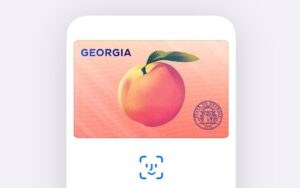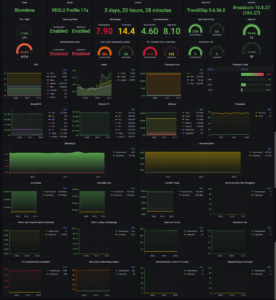When it comes to blogging, one question often lingers in the minds of writers and marketers alike: What is the ideal length of a blog? With countless opinions floating around, you might find yourself scratching your head. Should you aim for a succinct 300 words or dive deep into a sprawling 2,000-word masterpiece?
The truth is that there’s no one-size-fits-all answer. The perfect blog length varies based on several factors including audience preferences, topic complexity, and SEO practices. In this post, we’ll unravel the mystery behind blog length and help you discover how to strike the right balance between engaging content and optimal word count. Whether you’re writing for fun or aiming to boost your business’s online presence, understanding blog length can make all the difference in capturing your readers’ attention. Let’s get started!
The Importance of Blog Length
The length of a blog post plays a crucial role in its effectiveness. It influences readability, engagement, and even search engine rankings.
A well-chosen word count can draw readers in or push them away. Too short might leave them wanting more information, while too long could overwhelm them. Striking the right balance keeps your audience interested.
Moreover, blog length impacts SEO performance. Search engines tend to favor longer content that provides thorough insights into topics. But remember—quality always trumps quantity.
In today’s fast-paced world, attention spans are shorter than ever. Readers appreciate concise writing that respects their time while still delivering value.
Understanding the importance of blog length helps you cater to your audience’s needs effectively and enhances your content strategy.
Factors to Consider When Determining Blog Length
When determining the ideal length of a blog, several factors come into play.
First, consider your target audience. Different demographics have varying preferences for content consumption. Some readers may prefer quick bites of information, while others appreciate in-depth analysis.
Next, think about the topic itself. Complex subjects might require more space to thoroughly cover key points and nuances. Conversely, straightforward topics can be effectively addressed in fewer words.
SEO also plays a vital role in blog length decisions. Search engines favor comprehensive content that addresses user intent but avoid unnecessary fluff that could dilute value.
Don’t overlook your primary goal for each post—whether it’s driving traffic, educating readers, or generating leads will influence how long your article should be.
Monitor analytics to understand what resonates with your audience over time; adapting based on feedback is crucial for growth and engagement success.
Benefits of Shorter Blogs
Shorter blogs have a unique appeal. They cater to the fast-paced nature of online readers who often skim content. Quick access to information keeps them engaged.
Brevity can spark interest. When you deliver concise, impactful messages, readers are more likely to share your content on social media platforms.
These bite-sized pieces are easier for mobile users too. More people browse on their phones than ever before. A shorter blog fits perfectly into their reading routine while waiting in line or during breaks.
SEO also benefits from shorter posts when they tackle specific topics effectively. These focused articles can rank well if optimized correctly, drawing traffic without overwhelming visitors.
Shorter blogs encourage regular posting frequency. You can produce quality content consistently and maintain audience engagement over time without burnout or sacrificing depth.
Benefits of Longer Blogs
Longer blogs have their own unique advantages. They allow for in-depth exploration of a topic, giving readers comprehensive insights. This depth can help establish authority and trust with your audience.
These extended pieces often rank better on search engines. The additional content provides more keywords and context for algorithms to analyze. As a result, you might see increased organic traffic over time.
Moreover, longer blogs encourage reader engagement. When written well, they keep the audience hooked and encourage them to spend more time on your site. This dwell time signals relevance to search engines.
Additionally, longer posts create opportunities for internal linking to other articles on your website. It keeps visitors navigating through related topics, enhancing their overall experience while boosting SEO performance simultaneously.
Finding the Ideal Length for Your Audience
Understanding your audience is key to determining the ideal length of a blog. Different demographics have varying preferences. Some readers may enjoy quick, digestible content that gets straight to the point.
Others might appreciate deeper dives into topics, craving comprehensive insights and data. Knowing who you’re writing for can help you tailor your content effectively.
Use analytics tools to gather insights about how long visitors stay on your site. Are they bouncing after a few seconds? Or are they scrolling through entire articles? These metrics offer clues.
Consider conducting surveys or polls to directly ask your audience what they prefer. Engaging with them creates a connection and provides valuable feedback.
Experimenting with different lengths can also reveal patterns in reader engagement. Test shorter posts against longer ones to see which captures attention more effectively over time. It’s all about finding that sweet spot tailored for those you aim to reach.
Tips for Writing a High-Quality Blog Regardless of Length
Focus on your audience first. Understand who they are and what they want to read. Tailoring your content ensures better engagement.
Craft a catchy title. An intriguing headline draws readers in, no matter how long or short the post is. Make it clear yet enticing.
Use subheadings for structure. They break up text and make it easier to skim. This is essential for keeping attention in today’s fast-paced world.
Edit ruthlessly. Clear out fluff and redundant phrases that dilute your message. Each word should serve a purpose.
Incorporate visuals when relevant. Images, infographics, or videos can enhance understanding and keep readers interested.
Include actionable takeaways at the end of sections to provide value. This encourages readers to apply what they’ve learned immediately.
Ensure you have a strong call-to-action that guides them towards next steps—be it sharing, commenting, or exploring more content on your site.
Conclusion
Determining the ideal length of a blog isn’t a one-size-fits-all approach. It depends on your audience, niche, and goals. Shorter blogs can quickly engage readers and drive traffic, while longer posts might provide more depth and authority.
Understanding your target audience is key. Are they looking for quick tips or in-depth analyses? Adjust your content accordingly to meet their expectations.
Regardless of length, focus on quality. Ensure that every word serves a purpose. Engaging writing will keep readers interested no matter how long or short your post may be.
Experiment with different lengths to see what resonates best with your audience. Track engagement metrics like time spent on page and shares to gauge effectiveness.
The right blog length combines quality content with an understanding of reader preferences—striking a balance that keeps them coming back for more.




